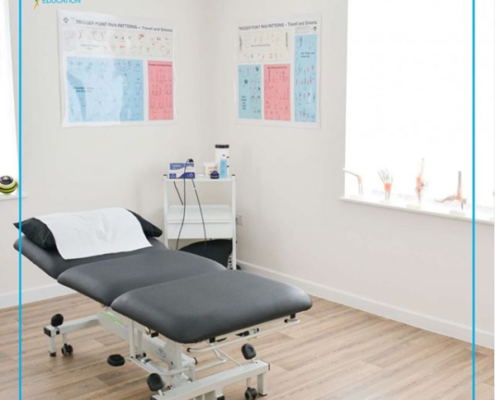
SmartEducation en Dorsoo: een unieke samenwerking!
Iedere kinesitherapeut krijgt ze wel over de vloer: patiënten…
 https://smarteducation.be/wp-content/uploads/2020/09/Huiswerkoefeningen-300x300-1.png
300
300
Robbie Billen
https://smarteducation.be/wp-content/uploads/2021/12/Logo-SmartEducation-klein-keur.png
Robbie Billen2020-09-30 16:03:322020-09-30 16:03:32Huiswerkoefeningen met docent Ruud Schuitemaker
https://smarteducation.be/wp-content/uploads/2020/09/Huiswerkoefeningen-300x300-1.png
300
300
Robbie Billen
https://smarteducation.be/wp-content/uploads/2021/12/Logo-SmartEducation-klein-keur.png
Robbie Billen2020-09-30 16:03:322020-09-30 16:03:32Huiswerkoefeningen met docent Ruud Schuitemaker https://smarteducation.be/wp-content/uploads/2020/09/lopersknie.png
276
276
Robbie Billen
https://smarteducation.be/wp-content/uploads/2021/12/Logo-SmartEducation-klein-keur.png
Robbie Billen2020-09-30 15:42:322021-06-24 14:13:09Patiëntenleaflets voor kinesitherapeuten
https://smarteducation.be/wp-content/uploads/2020/09/lopersknie.png
276
276
Robbie Billen
https://smarteducation.be/wp-content/uploads/2021/12/Logo-SmartEducation-klein-keur.png
Robbie Billen2020-09-30 15:42:322021-06-24 14:13:09Patiëntenleaflets voor kinesitherapeuten https://smarteducation.be/wp-content/uploads/2020/09/livestorm-meet-450x342-1.png
342
450
Robbie Billen
https://smarteducation.be/wp-content/uploads/2021/12/Logo-SmartEducation-klein-keur.png
Robbie Billen2020-09-30 15:32:342021-06-25 14:19:59Een teleconsultatie met mijn patiënt: hoe pak ik dat aan?
https://smarteducation.be/wp-content/uploads/2020/09/livestorm-meet-450x342-1.png
342
450
Robbie Billen
https://smarteducation.be/wp-content/uploads/2021/12/Logo-SmartEducation-klein-keur.png
Robbie Billen2020-09-30 15:32:342021-06-25 14:19:59Een teleconsultatie met mijn patiënt: hoe pak ik dat aan? https://smarteducation.be/wp-content/uploads/2020/09/Thumbnail-Claire-Patella.png
1080
1080
Robbie Billen
https://smarteducation.be/wp-content/uploads/2021/12/Logo-SmartEducation-klein-keur.png
Robbie Billen2020-09-30 15:09:202021-08-27 15:14:17Over patellofemorale klachten, fat pads én winkelmandjes: beluister hier onze podcast met Claire Robertson
https://smarteducation.be/wp-content/uploads/2020/09/Thumbnail-Claire-Patella.png
1080
1080
Robbie Billen
https://smarteducation.be/wp-content/uploads/2021/12/Logo-SmartEducation-klein-keur.png
Robbie Billen2020-09-30 15:09:202021-08-27 15:14:17Over patellofemorale klachten, fat pads én winkelmandjes: beluister hier onze podcast met Claire Robertson https://smarteducation.be/wp-content/uploads/2020/09/Thumbnail-Rich-Willy.png
1080
1080
Robbie Billen
https://smarteducation.be/wp-content/uploads/2021/12/Logo-SmartEducation-klein-keur.png
Robbie Billen2020-09-30 14:46:482021-06-24 11:36:31SmartEducation Podcast with Rich Willy
https://smarteducation.be/wp-content/uploads/2020/09/Thumbnail-Rich-Willy.png
1080
1080
Robbie Billen
https://smarteducation.be/wp-content/uploads/2021/12/Logo-SmartEducation-klein-keur.png
Robbie Billen2020-09-30 14:46:482021-06-24 11:36:31SmartEducation Podcast with Rich Willy https://smarteducation.be/wp-content/uploads/2020/09/episode-11-Merv-Travers-002.png
1080
1080
Robbie Billen
https://smarteducation.be/wp-content/uploads/2021/12/Logo-SmartEducation-klein-keur.png
Robbie Billen2020-09-30 11:07:352021-06-24 14:21:32Krachttraining Do's & Don'ts
https://smarteducation.be/wp-content/uploads/2020/09/episode-11-Merv-Travers-002.png
1080
1080
Robbie Billen
https://smarteducation.be/wp-content/uploads/2021/12/Logo-SmartEducation-klein-keur.png
Robbie Billen2020-09-30 11:07:352021-06-24 14:21:32Krachttraining Do's & Don'ts https://smarteducation.be/wp-content/uploads/2020/09/autokosten-fiscaal-aftrekken.jpg
509
763
Robbie Billen
https://smarteducation.be/wp-content/uploads/2021/12/Logo-SmartEducation-klein-keur.png
Robbie Billen2020-09-30 10:45:312021-06-24 11:12:20Zo kan je als kinesitherapeut je autokosten aftrekken!
https://smarteducation.be/wp-content/uploads/2020/09/autokosten-fiscaal-aftrekken.jpg
509
763
Robbie Billen
https://smarteducation.be/wp-content/uploads/2021/12/Logo-SmartEducation-klein-keur.png
Robbie Billen2020-09-30 10:45:312021-06-24 11:12:20Zo kan je als kinesitherapeut je autokosten aftrekken! https://smarteducation.be/wp-content/uploads/2020/09/praktijkmanagement-smarteducatoin.png
600
600
Robbie Billen
https://smarteducation.be/wp-content/uploads/2021/12/Logo-SmartEducation-klein-keur.png
Robbie Billen2020-09-30 10:34:282021-08-27 13:21:21De 5 gouden tips voor een succesvolle onderneming
https://smarteducation.be/wp-content/uploads/2020/09/praktijkmanagement-smarteducatoin.png
600
600
Robbie Billen
https://smarteducation.be/wp-content/uploads/2021/12/Logo-SmartEducation-klein-keur.png
Robbie Billen2020-09-30 10:34:282021-08-27 13:21:21De 5 gouden tips voor een succesvolle onderneming
De unieke strategieën van running expert Jay Dicharry
Na een sportieve carrière…
